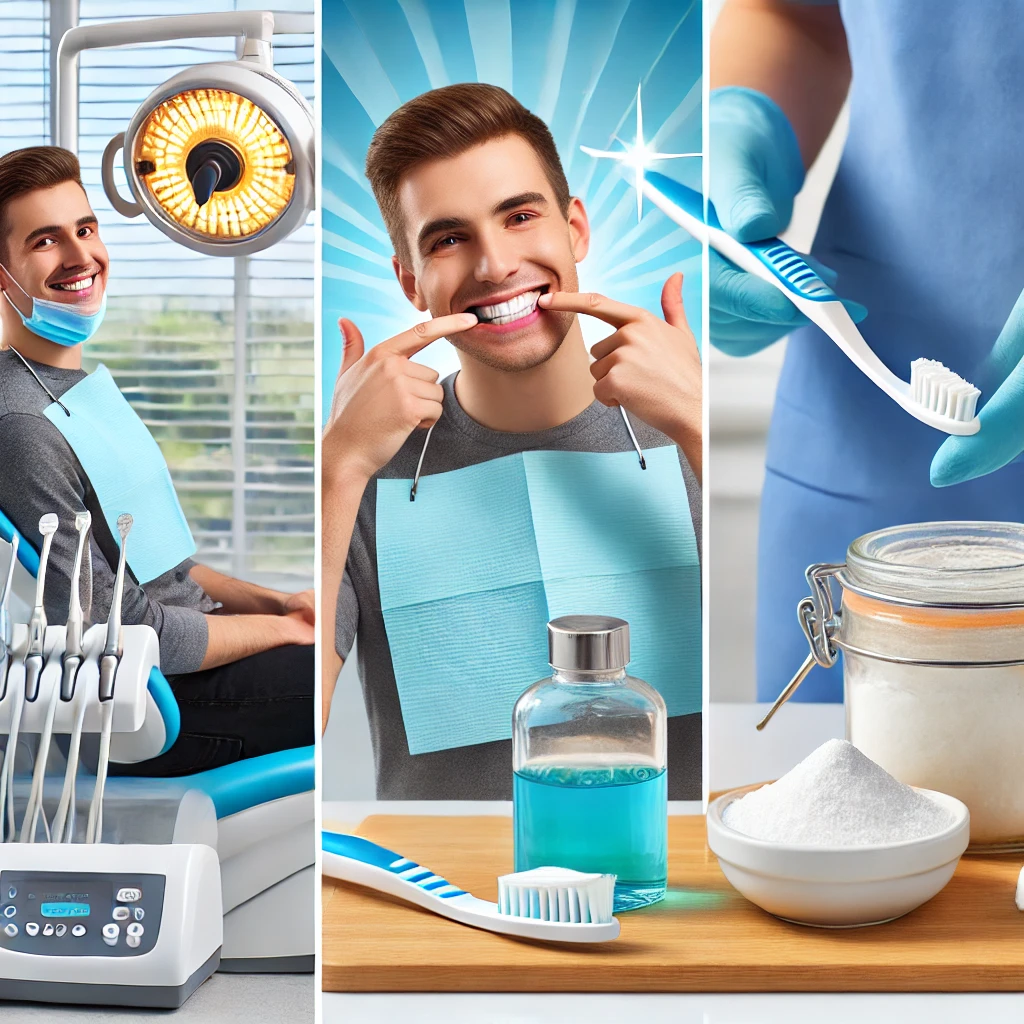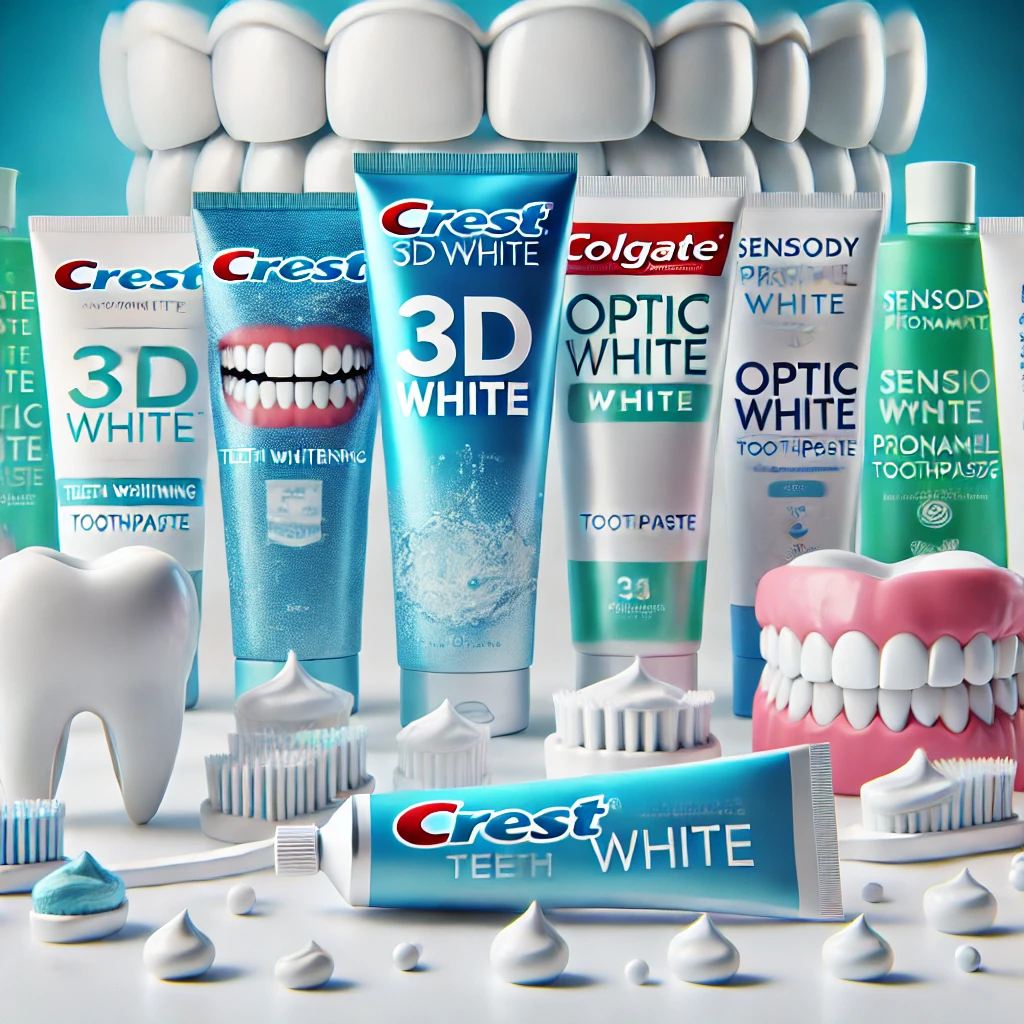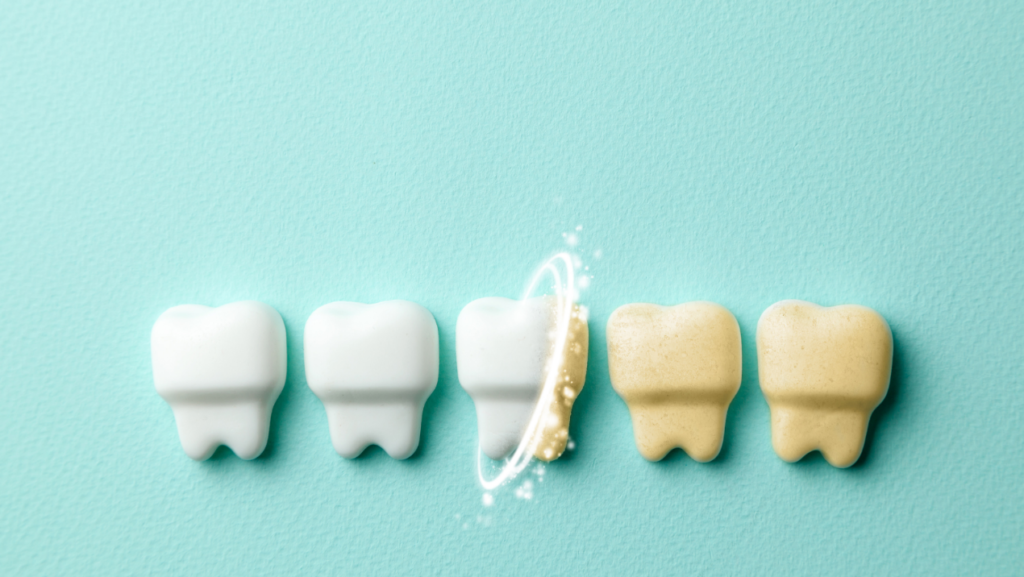Do you want a brighter smile? Teeth whitening has become one of the most popular cosmetic dental treatments. There are many ways to whiten your teeth, from professional treatments to DIY kits at home. In this post, we will explore the pros and cons of different teeth whitening methods so you can choose the best option for you.
1. Professional Teeth Whitening
Pros:
- Fast Results: Professional teeth whitening can make your teeth several shades lighter in just one visit to the dentist. It’s the quickest method available.
- Safe and Controlled: Dentists use high-quality whitening agents and control the process, ensuring your teeth and gums are safe.
- Long-Lasting: The effects of professional whitening usually last longer than over-the-counter products.
Cons:
- Cost: Professional teeth whitening can be expensive, typically costing between $300 to $1,000 depending on your location.
- Sensitivity: Some people may experience increased tooth sensitivity after the treatment, but this usually fades after a few days.
2. At-Home Whitening Kits
Pros:
- Affordable: At-home whitening kits, like strips or trays, are much cheaper than professional treatments. You can find good options for $20 to $100.
- Convenient: You can use these kits at home at your own pace, usually over a period of a few days or weeks.
- Widely Available: Whitening kits can be purchased at most drugstores or online without a dentist’s prescription.
Cons:
- Slower Results: At-home kits take longer to show noticeable results compared to professional treatments. It may take weeks to achieve your desired shade.
- Uneven Whitening: The fit of trays or strips may not be perfect, leading to uneven whitening in certain areas.
- Possible Gum Irritation: If not used correctly, the whitening agents can cause gum irritation or increase tooth sensitivity.
3. Whitening Toothpaste
Pros:
- Easy to Use: Whitening toothpaste is a simple addition to your daily routine. You just brush your teeth as usual.
- Affordable: It’s one of the most budget-friendly options, with prices ranging from $5 to $10.
- Good for Maintenance: Whitening toothpaste can help maintain the results of professional whitening or other treatments.
Cons:
- Minimal Results: Whitening toothpaste doesn’t provide dramatic results. It mainly removes surface stains rather than changing the color of your teeth.
- Longer Timeframe: You need to use the toothpaste for several weeks or months to notice any difference.
4. Natural Teeth Whitening Remedies
Pros:
- Chemical-Free: Many people prefer natural remedies to avoid chemicals. Common methods include using baking soda or activated charcoal.
- Cheap: These methods are very cost-effective since they use ingredients you probably already have at home.
Cons:
- Limited Effectiveness: Natural methods are not as strong as professional treatments or store-bought kits. They might remove surface stains but won’t deeply whiten your teeth.
- Risk of Damage: Some natural ingredients, like lemon juice or baking soda, can be abrasive and may wear down your tooth enamel if used too often.
5. Whitening Strips
Pros:
- Easy Application: Whitening strips are simple to apply and don’t require molds or trays.
- Effective for Mild Stains: They can work well for people who have mild to moderate stains, with noticeable results in a few days.
- Affordable: Whitening strips are a middle-ground option in terms of price, usually costing between $20 and $50.
Cons:
- Temporary Sensitivity: Like other methods, whitening strips can cause temporary tooth sensitivity.
- Limited Coverage: Strips may not cover all areas of the teeth, leading to uneven whitening.
Conclusion: Which Teeth Whitening Method is Best for You?
Choosing the right types of teeth whitening method depends on your budget, time, and desired results. If you want quick, professional results and are willing to pay more, professional teeth whitening is your best option. If you prefer an affordable, convenient method, consider at-home whitening kits or whitening strips. For a more natural approach, try whitening toothpaste or DIY remedies, but be cautious of their limitations.
Regardless of which method you choose, it’s important to maintain good oral hygiene and follow instructions carefully to avoid damaging your teeth.




